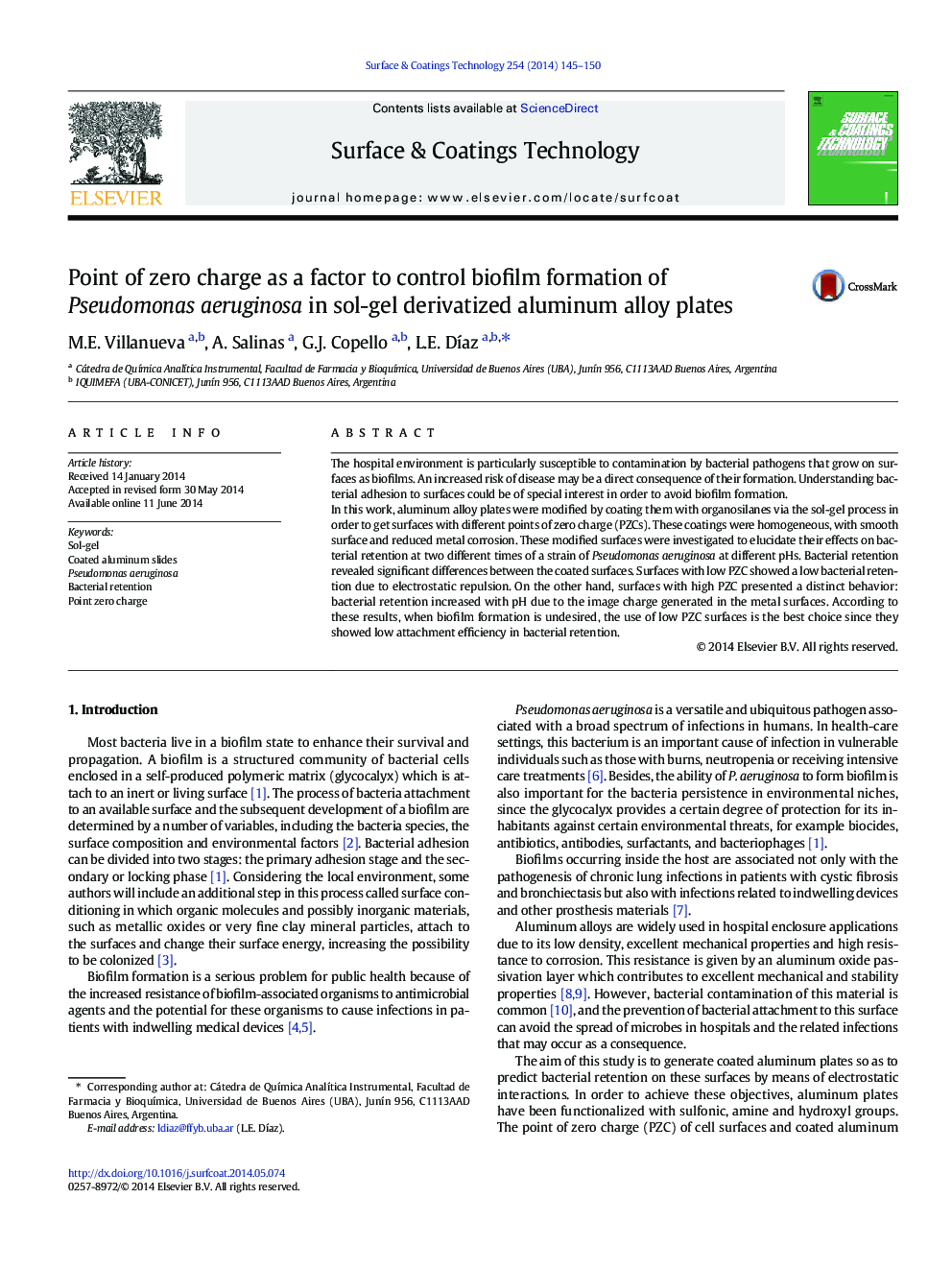| Article ID | Journal | Published Year | Pages | File Type |
|---|---|---|---|---|
| 8027551 | Surface and Coatings Technology | 2014 | 6 Pages |
Abstract
In this work, aluminum alloy plates were modified by coating them with organosilanes via the sol-gel process in order to get surfaces with different points of zero charge (PZCs). These coatings were homogeneous, with smooth surface and reduced metal corrosion. These modified surfaces were investigated to elucidate their effects on bacterial retention at two different times of a strain of Pseudomonas aeruginosa at different pHs. Bacterial retention revealed significant differences between the coated surfaces. Surfaces with low PZC showed a low bacterial retention due to electrostatic repulsion. On the other hand, surfaces with high PZC presented a distinct behavior: bacterial retention increased with pH due to the image charge generated in the metal surfaces. According to these results, when biofilm formation is undesired, the use of low PZC surfaces is the best choice since they showed low attachment efficiency in bacterial retention.
Related Topics
Physical Sciences and Engineering
Materials Science
Nanotechnology
Authors
M.E. Villanueva, A. Salinas, G.J. Copello, L.E. DÃaz,
